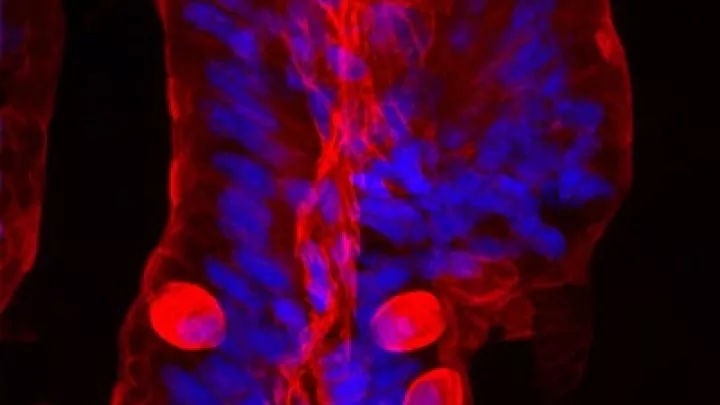
A Clearer Picture of Inflammatory Bowel Disease (IBD): A Foundation for Newer Treatments
Inflammatory bowel disease (IBD) affects more than 70,000 children in the United States. Children with IBD, a broad term which includes Crohn’s disease and ulcerative colitis, can experience abdominal pain and weight loss. Despite ongoing research efforts, there is still no cure for this condition.
“When it comes to IBD, there aren’t great treatments that last in the long term,” says postdoctoral researcher Michael Schumacher, PhD. “Largely, this is because there’s no single target to aim for.”
He explains that IBD isn’t the result of a single gene, but rather a number of factors contribute to development of the condition. A clearer picture of what is occurring inside cells of the intestines could help researchers seek more effective treatments. Thanks to a new study from Children’s Hospital Los Angeles, this image is now coming into focus. Recently published in Nature Communications, these findings may pave the way for future treatments.
Striking a balance
There are many types of cells that make up the epithelium, or inner lining of the intestines. The various cells must exist in a balance to maintain a healthy gut. Each cell plays an important role. For example, Goblet cells secrete mucus to protect the inner lining of the intestine. If there aren’t enough of these cells, the intestine could be damaged. But too much mucus in the intestine can interfere with absorption of nutrients. Despite the importance of this balance, little is known about how it is regulated.
Inside each cell, dozens of molecules work in cohesive teams, often called molecular pathways. “One of the common themes of IBD is a dysregulation of these pathways,” says Mark Frey, PhD, senior author on the publication. “What we’re doing is putting together this complicated puzzle and determining the role of each piece.” Dr. Frey is the Director of the Developmental Biology and Regenerative Medicine Research in The Saban Research Institute of Children’s Hospital Los Angeles.
In their new publication, Dr. Frey and Dr. Schumacher outline a detailed molecular pathway that contributes to the regulation of cell types in the intestines. Studies like these are crucial for future IBD treatments because they reveal a host of new potential targets to study for possible intervention.
“Basic science studies like these may seem far away from clinical care,” says Dr. Schumacher, “but they’re so important. The pathway we’ve outlined here could lead to a treatment that helps a child live a better life, and that’s why we’re here.”


